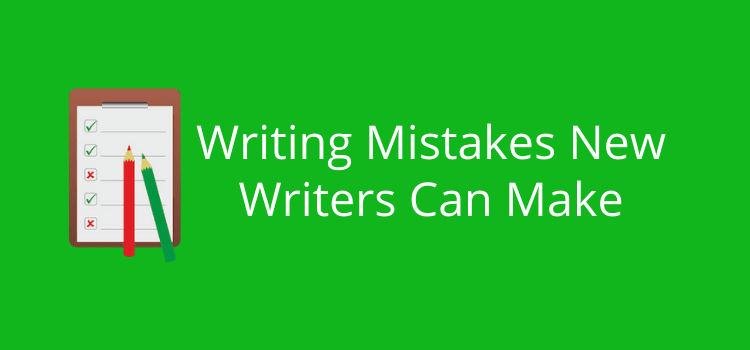
Dialogue writing for new fiction authors can sometimes pose a challenge. But, in fact, it is easy as long as you follow a few simple guidelines.
The two most important points are to make sure that you are consistent in your use of punctuation and tenses. Yes, it is possible to write dialogue in both past and present tenses.
The last one is to avoid using adverbs in dialogue tags, or at least use them sparingly.
Once you know how to control these three points, writing fantastic dialogue is easy.
What is dialogue?
You want to show your readers what your characters think and feel.
Your dialogue will communicate the personality and emotions of your characters.
The general rule of thumb is to write the way people speak.
You want to have your character speaking in the most natural voice possible.
Each one of your characters will have their own voice.
This will help you create unique character profiles in your story.
But you need to be careful, especially with your consistency in dialogue.
If you are new to writing, one of the best pieces of advice is to read your dialogue aloud.
It is the easiest way to ensure that what you write sounds natural and conveys the right emotion.
But let’s look at how you can use tenses in your dialogue.
Tenses for dialogue

The most common form you see is a dialogue using the past tense.
This is the standard he said; she said style that you see in most fiction novels or even short stories.
However, it is possible to use simple present-tense dialogue. You write your dialogue using present tenses and change the dialogue tag to she says, he says.
While the past tense dialogue is the most common, it’s up to you which one you use.
There is an extra possibility when you use reported speech within your dialogue.
This form incorporates the use of the past perfect.
Of course, once you decide on a tense form, you need to use it consistently and not mix your tenses.
Look at the examples below to see the difference between present-tense and past-tense dialogue.
Present tense dialogue examples
Standing at my friend’s birthday party, we are just having so much fun.
“Hey, Kate,” says Lorraine.
“How is your birthday going so far?” I ask.
“It’s going great, and I just want to thank you for all your help,” Loraine replies.
Past tense dialogue examples
Last week I was at Lorraine’s house for her birthday party.
We had so much fun, and at the end of the party, Lorraine called me aside and said we needed to talk.
“What do you want to talk about?” I asked.
“I just wanted to thank you for all your help with the party,” Lorraine said.
“Oh, it was nothing. All I did was blow up the balloons,” I replied.
Instead of explaining through your narrative, your dialogue can create emotion, feelings, and atmosphere.
You can use a lot of dialogue tags, but the most common one is the verb say.
While it is non-emotive, it is a safe tag to mark dialogue changes from one character to another.
Readers tend to read through this tag without noticing.
But there are many other words for said, such as screamed, observed, cried, and denied, to name a few.
Your word choice can help you be more specific about the character’s emotions when they say something.
Tags are often necessary to help readers understand the emotion of dialogue, but you should avoid overusing tags.
If only two characters are talking, you might want to omit the dialogue tags.
But if there are three characters in the conversation, you definitely need to use tags to identify who is speaking.
If you decide not to add a tag to a line of your dialogue, the reader must be able to assume who is speaking.
“I’m not sure if I should apply for this job,” Ryan said.
“Is it a good salary?” Mary asked.
“Yes, it’s much more than I am getting paid now.”
“Well, what are you worried about? Apply for it is and see how you get on.”
“I suppose you’re right.”
In this example, there is no need for tags after the first two lines.
Once the two characters are identified, it is clear who is speaking in the conversation.
As long as each utterance starts on a new line, it is easy for a reader to follow.
Avoid adverbs
In good dialogue, it is always best to avoid adding unnecessary adverbs to your tags.
It is a very common writing fault for new writers of fiction.
Stephen King famously said, “the road to hell is paved with adverbs.”
Whenever you use an adverb, find a better way to communicate the emotion you are trying to show with a single, stronger tag.
She said quietly. Poor
She whispered. Better
He shouted loudly. Poor
He bellowed. Better
She said sadly. Poor
She moaned. Better
You can almost always communicate your message without the use of adverbs.
Trying to over-explain in a dialogue tag is weak writing and can cause distraction from the flow of your dialogue.
The best rule is to keep your tags as simple as possible. Your storyline should be more than enough for your reader to follow.
Dialogue punctuation
There are a variety of punctuation rules for dialogue.
However, one basic rule is easy to follow. When formatting dialogue, the comma is inside the quotation.
It’s not only the comma. You need to include all punctuation within your quotation marks.
“That’s all I need right now.”
“What are you doing?”
“Don’t do it!”
“I don’t know if I can do it,” he said.
As you can see, when you use a question mark, exclamation, period (full stop), or comma, they are always before the closing quotation mark.
If you use a tag before an utterance, the same rule applies. However, there is an extra comma after the tag.
Haley said, “I’m ready to go now.”
Michael asked, “How much is a ticket to London?”
Lee screamed, “That’s it. I quit!”
Quotation marks for dialogue
This is a personal choice for writers.
While many prefer to use curly double quotation marks, others might prefer double straight.
You can also use single quotation marks. These are becoming more common in ebooks.
Lastly is the choice to use no quotation marks.
In Tim Winton’s book Cloudstreet, he uses no quotation marks at all in the dialogue.
I must admit it was a bit disconcerting when I first started reading the book.
But after a while, I quite enjoyed the change and had no problem understanding the dialogue.
Summary
Writing and punctuating dialogue is not a difficult task at all, even for a new fiction writer.
All you need to do is follow the basics. You will probably choose to write your dialogue using the past tense.
However, you can experiment and try using dialogue in the present tense using present simple and present continuous forms.
When you are writing, don’t worry too much about the rules.
You can always check and correct issues when it comes time to read and edit your manuscript.
But you can save yourself a lot of time by remembering to include any punctuation before the closing quotation mark.
Make it a habit, and your writing will flow more easily.
By far, the most vital part of great dialogue is using it to show your story rather than telling it in your narrative.
Related reading: How To Maintain Tense Control In Your Writing




I think the use of present versus past (especially in dialogue) depends on when it is happening or what or when the speaker is referring to something. Otherwise, Jane Austen’s novel Pride and Prejudice page 1 needs a rewrite! Even her first and last sentence on this page are in different tenses. And it is considered a past tense novel per Spark Notes. Please see below for her opening words.
It is a truth universally acknowledged, that a single man in possession of a good fortune, must be in want of a wife.
However little known the feelings or views of such a man may be on his first entering a neighbourhood, this truth is so well fixed in the minds of the surrounding families, that he is considered as the rightful property of some one or other of their daughters.
“My dear Mr. Bennet,” said his lady to him one day, “have you heard that Netherfield Park is let at last?”
Mr. Bennet replied that he had not.
“But it is,” returned she; “for Mrs. Long has just been here, and she told me all about it.”
Mr. Bennet made no answer.
“Do not you want to know who has taken it?” cried his wife impatiently.
“You want to tell me, and I have no objection to hearing it.”
This was invitation enough.
How do you know if you’re mixing up tenses? For example should it be:
‘Where was that little boy now? I wondered for the billionth time’ or ‘Where is that little boy now? I wondered for the billionth time’
I would go with the first. The past tenses agree.
For the second, it would need to be, “where is that little boy now? I wonder. “
It should be “‘Where is that little boy now?’ I wondered for the billionth time.” You are direct quoting what you thought/said in the past. If you are talking about what was said on your wedding day, you wouldn’t change the tense to be “I looked deeply into his eyes when he said “I did” with all his heart.” – he said “I do” would be correct.
Thank you for this, Lisa. I was just looking for a subject verb agreement rule in dialogues and I’m glad your article also led me to other pages in this website that might be a big help in my proofreading stage.
Thank you for sharing. I needed the refresher. I had no trouble with the dialogue in my current novel on Amazon, but finding it more difficult with this next novel. This helped. Wish I could reblog.